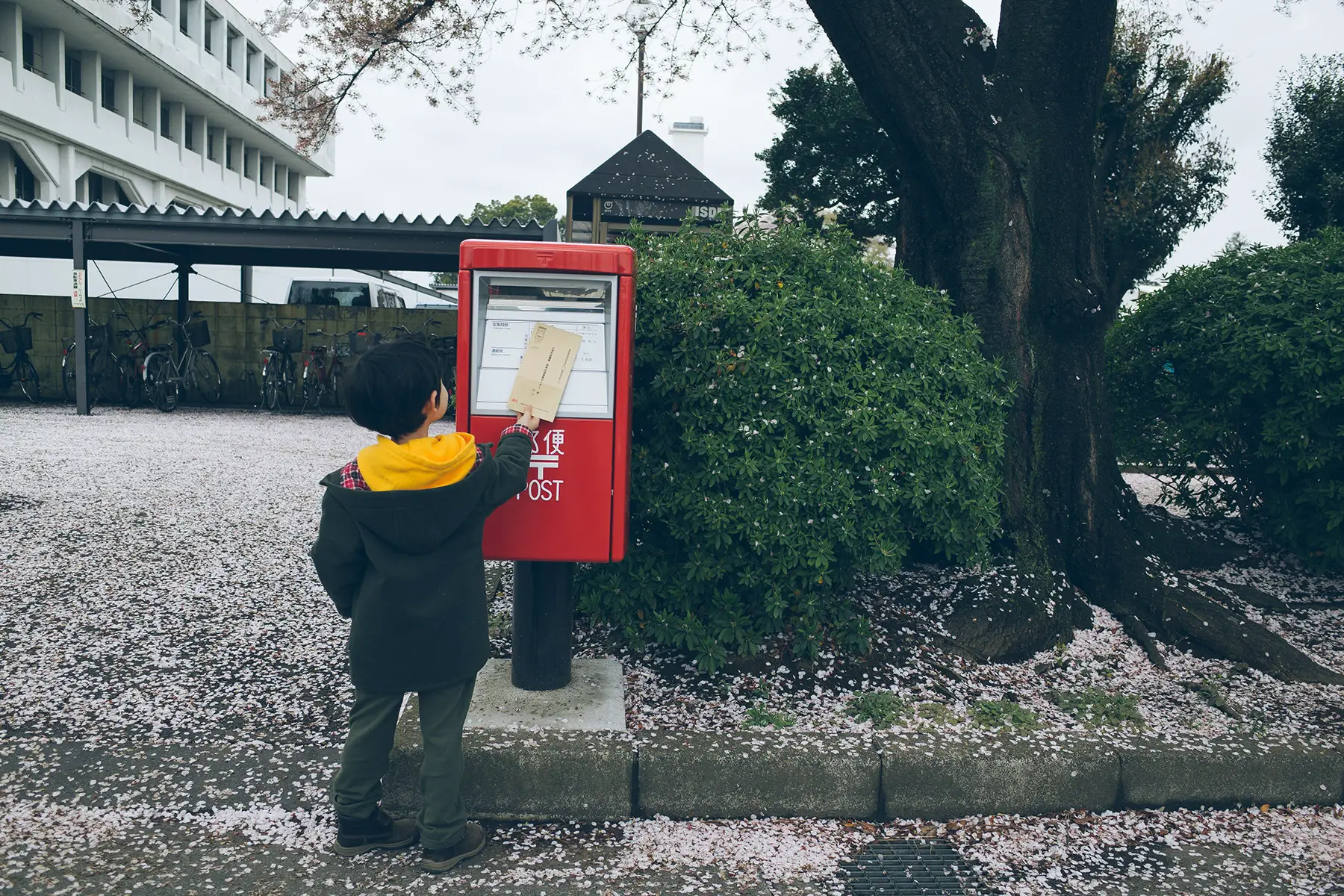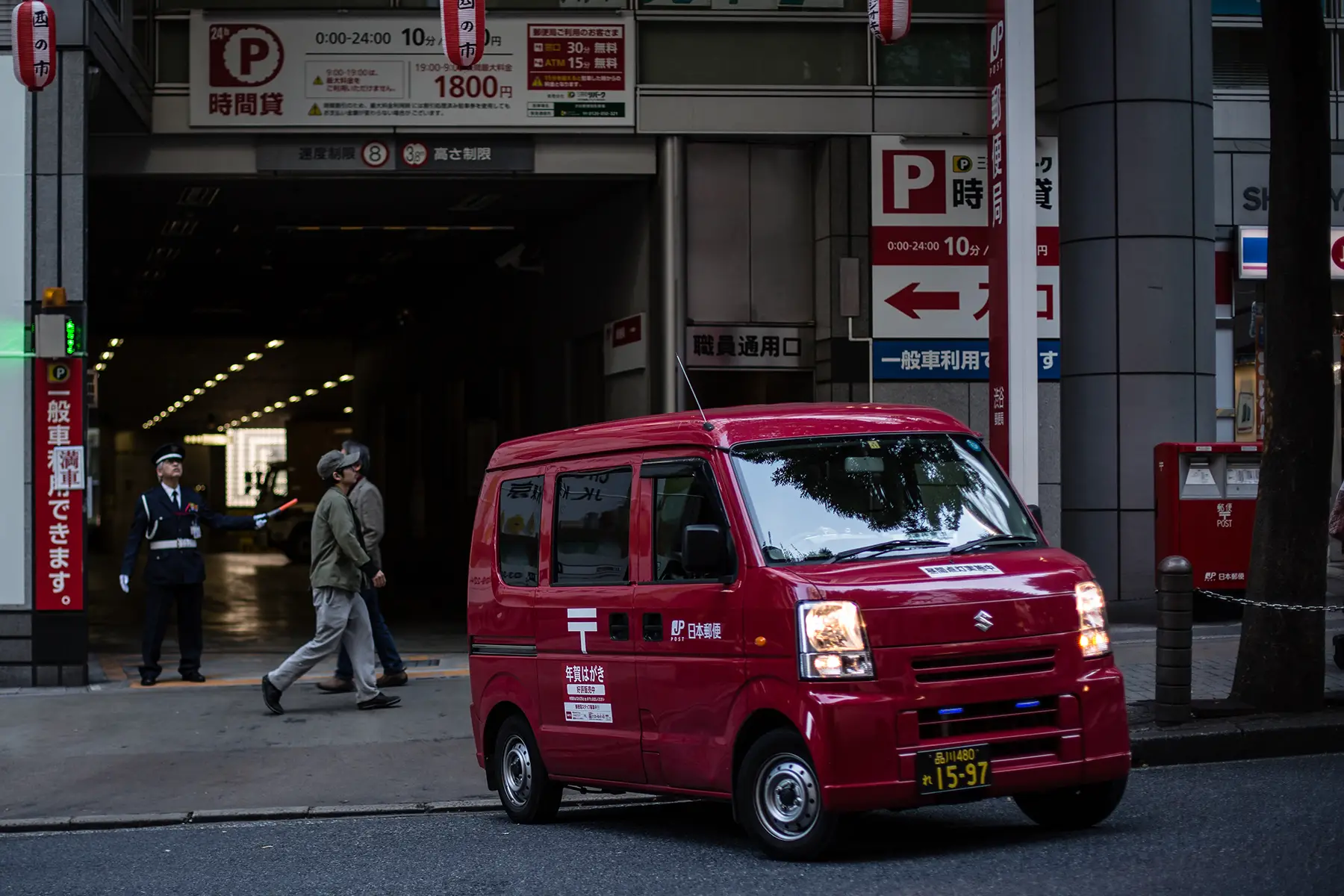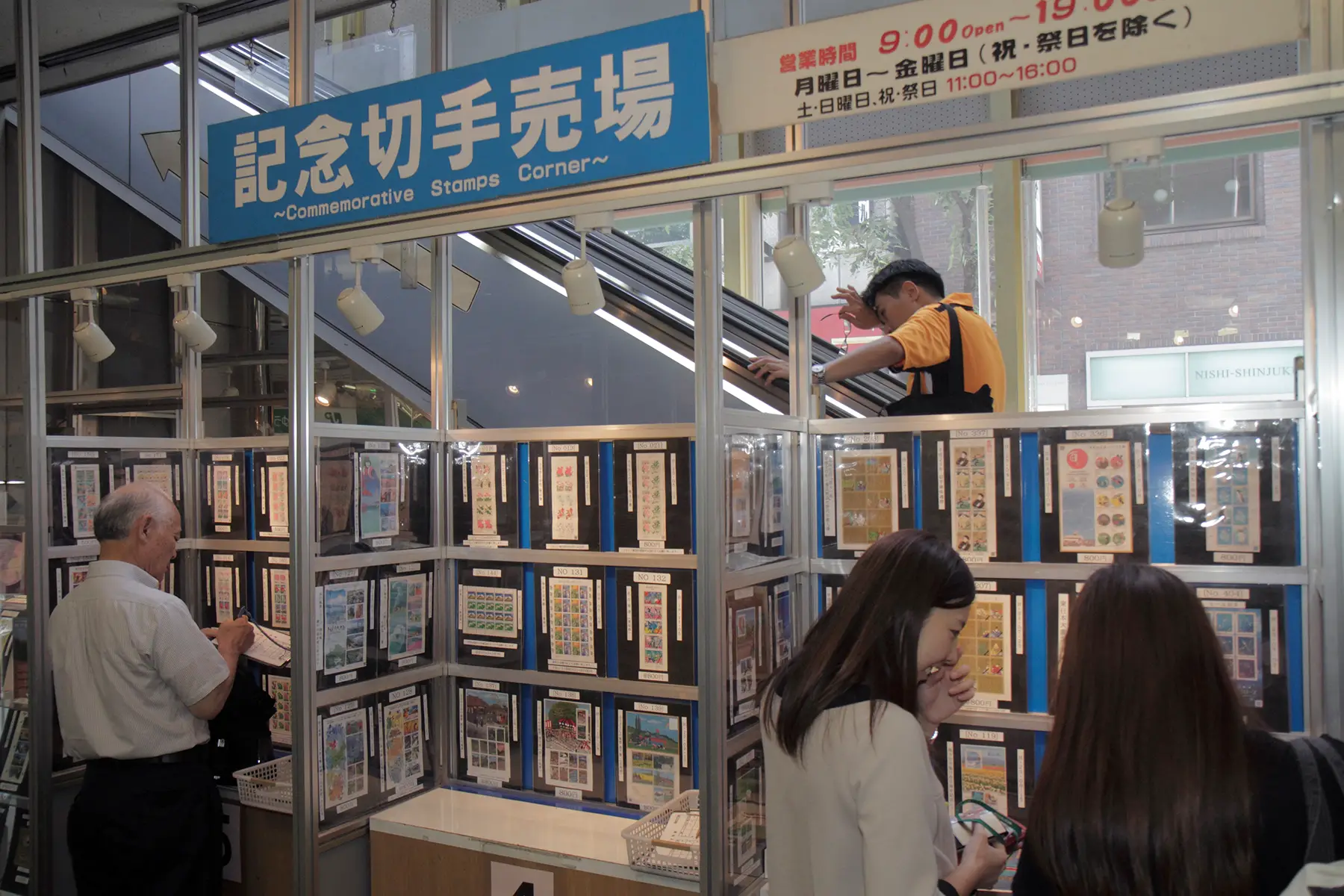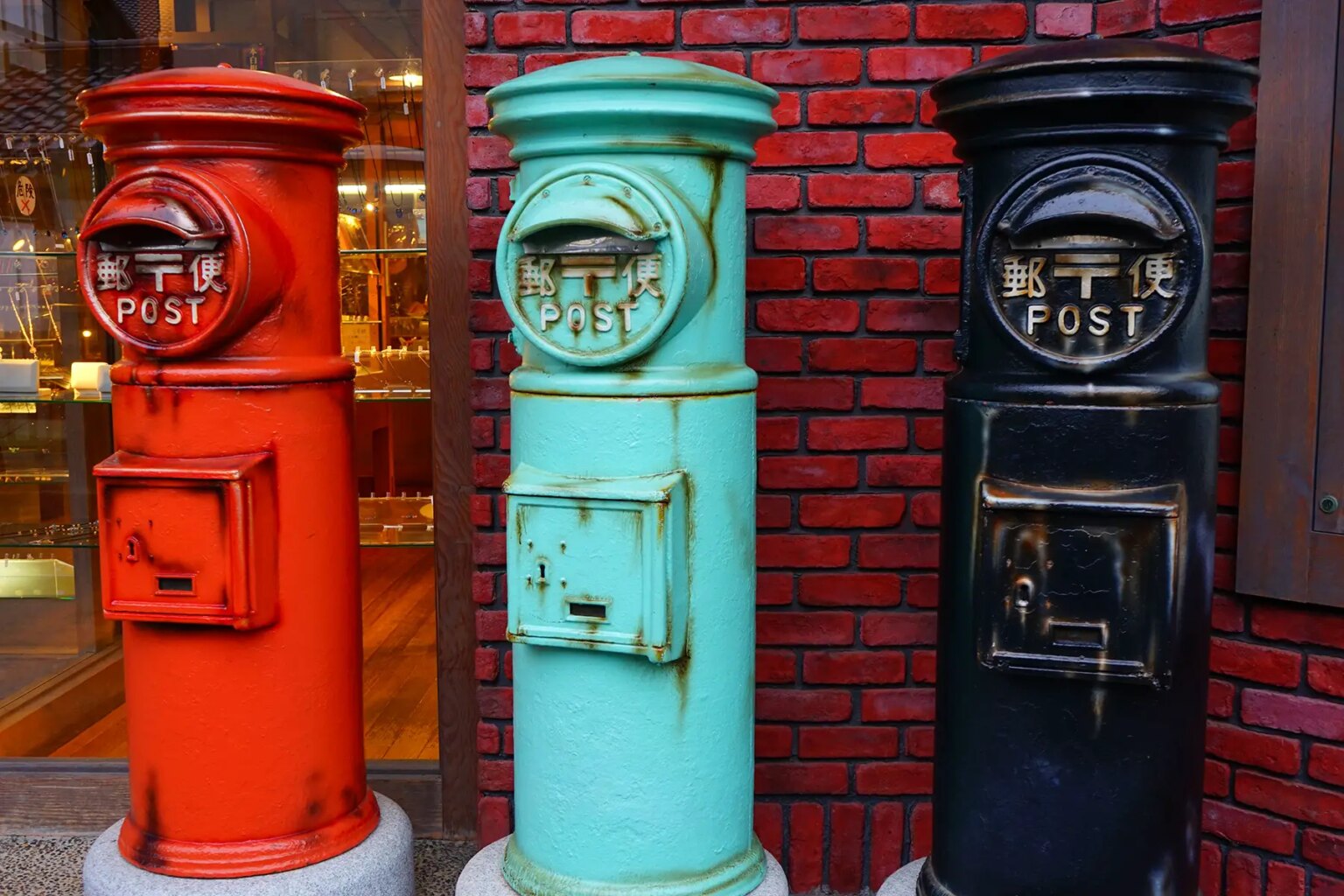Although it might be a while since you sent someone a handwritten letter, in Japan, the post office is still a vital part of everyday life. From the simple act of sending a postcard abroad to setting up a bank account with Japan Post, understanding the ins and outs of the post office is extremely useful.
With so many services and branches around Japan, it can seem a little confusing at first. So, below, you’ll find an explanation of the following topics:
Introduction to Japan post
Japan’s postal services officially began in 1871, but it was not established as a government-owned corporation until 2003 when it became Japan Post (日本郵便). You can recognize Japan Post by the 〒 symbol, which has been its service mark since 1887. It is still used today in addresses (住所) and on post boxes (郵便ポスト).

However, Japan Post Holdings (日本郵政), which operates the country’s postal services, covers much more than simply sending mail. This group encompasses Japan Post, Japan Post Bank (ゆうちょ銀行), and Japan Post Insurance (かんぽ生命保険).
At Japan Post Bank, not only can you carry out all the regular banking services, but you can also pay for utility bills and national health insurance.
How do I send and receive mail in Japan?
You can send regular letters (手紙) by affixing a stamp and dropping them in the post box. On the other hand, if you want to track or register delivery, you will need to use a post office. You’ll also need to stick to the standard letter dimensions and weight.
For example, “standard size” postal items (定形郵便物) must be a minimum of 14cm x 9cm, or a maximum of 23.5cm x 12cm, and under 50g. Anything above that is considered a “nonstandard size postal item” (定形外郵便物) and will cost more to send. If your mail weighs over 4kg, it counts as a package, even if it fits the other dimensions.
Sending tracked letters or a package within Japan from the post office is very convenient, as you can choose a delivery date and time. It’s a good idea to check when the addressee can receive it, but if they miss the arrival time, they will receive a slip to rearrange it – this can even happen the same day.
When it comes to shipping abroad, there are four different speeds and prices, including the Express Mail Service (EMS) (国際スピード郵便). However, Japan Post does not offer services from third-party companies such as DHL or Amazon.
Stamps in Japan
A potential source of confusion when mailing letters in Japan is the sheer number of stamps (切手) (in Japanese) available. But there are also a lot of novelty and commemorative stamps available for a limited time, so it can be fun to check out the new designs.
If you’re unsure which stamps to use, you can take the letter to the post office and ask the staff there. Otherwise, you can use the Japan Post chart to figure out what stamps you will need.
To send a letter, check what stamp(s) you need, then write the address and affix it to the top right corner before putting it in the post box.
How do Japanese addresses work?
If you are writing a Japanese address in English, it should be written in the following order:
- Name
- House
- Block number
- City
- Prefecture
- Postcode

On the other hand, if you write in Japanese, the format is:
- 〒 and postcode (郵便番号)
- Prefecture (都道府県)
- City (市町村)
- Block number (丁目・番地・号)
- House (建物名)
- Name (宛名)
When writing a Japanese name, you should first put the family name (名字), then the first name (名前), followed by 様 (sama, honorific equivalent of Mr. or Ms.). It’s also a good idea to write your address in smaller letters on the back of the envelope in case it needs to be returned to you.
Postcodes in Japan
All addresses in Japan have a postcode. When you write an address in Japanese on a letter, make sure it comes at the beginning, and proceed it with 〒. But when writing in English, 〒 is not necessary, and the postcode comes at the end.
Postcodes in Japan are seven digits long, separated by a hyphen. The first three digits represent the larger area (prefecture and city), and the last four the district. You can search for a city’s postcode in Japanese through Japan Post (in Japanese), but you’ll find that most websites and addresses on Google Maps make theirs easy to find.
Sending and receiving parcels and large items in Japan
If you want to send a package within Japan using Japan Post, you will need to send it by Yu-Pack (ゆうパック). Yu-Pack has different purpose-specific services, which include sending ski equipment or delivering luggage to the airport.
For regular packages, though, you must fill out a delivery slip (送り状) and attach it to your parcel. There are two different colors of slip: a regular blue one and a pink one for cash on delivery (着払い). Fill out your address and the recipient’s, your phone numbers, the preferred delivery date and time (from the next day onward), and the package contents. You can usually write in English, but it helps staff if you can do it in Japanese.
The price and speed of delivery depend on the package’s size, weight, and destination. Japan Post is usually very quick, and if you send a package within the same prefecture, it could arrive as little as one day later. Check delivery times before writing your preferred delivery date online in Japanese or by asking post office staff.
Because delivery is usually so quick, there is no “first class” or express delivery option. However, the same-day delivery (当日配達) option is popular with businesses.
How can I track my parcel?
You can track any Yu-Pack parcel with the Track & Trace service (郵便追跡サービス), and loss or damage can be compensated for up to 300,000 yen. There is a separate security service option for items up to 500,000 yen in value. You can send smaller articles up to 4kg via Letter Pack (レターパック).
If your parcel goes undelivered, it will stay with the Japan Post for up to 15 days.
Japan Post is not the only way to send or receive packages in Japan. You can also do it through convenience stores or the following couriers:
- Yamato Transport (ヤマト運輸)
- Sagawa (佐川急便)
- DHL Express
- FedEx
How do I find a post office in Japan?
Finding a post office (郵便局) in Japan is pretty easy, as there are over 24,000 branches of all sizes across the country. They are easily recognizable by their red 〒 logo, while post boxes are bright red with a white 〒.

Opening times can vary depending on the post office, but most are open Monday to Friday from 9:00 to 17:00. Most are closed on weekends or public holidays, but some (usually the bigger ones) are open every day.
Overseas shipping in Japan
To ship items internationally with Japan Post, you can choose from four different services, which vary in speed and price.
| Service | Features |
| Express Mail Service (EMS) (国際スピード郵便) | Fastest and most expensive. Shipping time 2–4 days. |
| Air Mail (航空便) | Fast and expensive. Shipping time 3–6 days. |
| Economy Air (SAL) (エコノミー航空便) | Reasonable price and speed. Shipping time 6–13 days. |
| Surface Mail (船便) | Cheapest. Shipping time 1–3 months. |
Note that not all countries are eligible to receive packages by SAL, and services are not currently available (June 2023), so check online before trying to use this method.
You can then use the Japan Post online portal to register your information and package details, such as address and contents. You can print out the shipping label at home or at the post office. You’ll need to bring your phone with you to scan a QR code.
Before shipping, make sure that your package doesn’t include any prohibited items. These items might differ from the rules you have used elsewhere. Make sure you list the contents clearly on the shipping label, too, as they are sometimes opened for inspection.
Overseas shipping companies
Although Japan Post has a number of different shipping methods, it is not the only courier that will ship abroad. A few other options include:
If you are moving house and want to ship more items, it’s worth looking into an international moving company like The Relocator or Sirelo instead.
Business mail in Japan
Although Japan Post offers few tailored services and discounts for businesses, its various delivery options make it useful. This includes their same-day delivery Yu-Pack system.
However, if you intend to use a courier regularly, it may be worth exploring other companies that offer corporate accounts and special deals.
Japan Post forwarding services
If you’ve spent some time living in Tokyo (東京) and are ready to move to a quieter life by the coast, it can take a while to let your friends and subscription services know your new address.

To help with that, the Japan Post offers a free forwarding service (転居・転送サービス) for one year following your application. Simply fill in the relocation form (転居届) and take it to a post office, showing one form of ID with the new address and one that states the old one.
Let people know where your new home is before the year runs out, as, after that point, items that arrive at your former address will be returned to the sender.
Additional postal services
There are a few other options to receive mail in Japan, such as PO boxes and collection points.
For example, Japan Post allows pick-up from your nearest post office. Meanwhile, online shopping outlets often let you have your items delivered to a convenience store. Many convenience stores are open late or even 24/7, so you can drop by to pick it up any time rather than worrying about being in the house for a delivery. There are some other collection point services, too, like Pudo.
If you’re self-employed and want to use a business address, many co-working spaces offer PO box and mail services. An alternative is to use a private letter box. Companies like Shishobako Center (私書箱センター) (in Japanese) allow you to send or receive items at an address separate from your home.
Mailing tips
Hopefully, you now have a pretty good idea of how postal services work in Japan, but keep these handy tips in mind:
- Write your return address on the back of the envelope to make sure it doesn’t get lost.
- Save time by using the Japan Post online portal to register your information first before sending a package internationally.
- Use registered mail (書留) when sending cash.
- Check what price of stamp you need before posting an international postcard.
- Make sure to fill any packages with packing paper or bubble wrap to avoid damage.
Useful resources
- Japan Post – English pages from the postal service
- How to send packages overseas – a beginner’s guide to sending mail abroad






